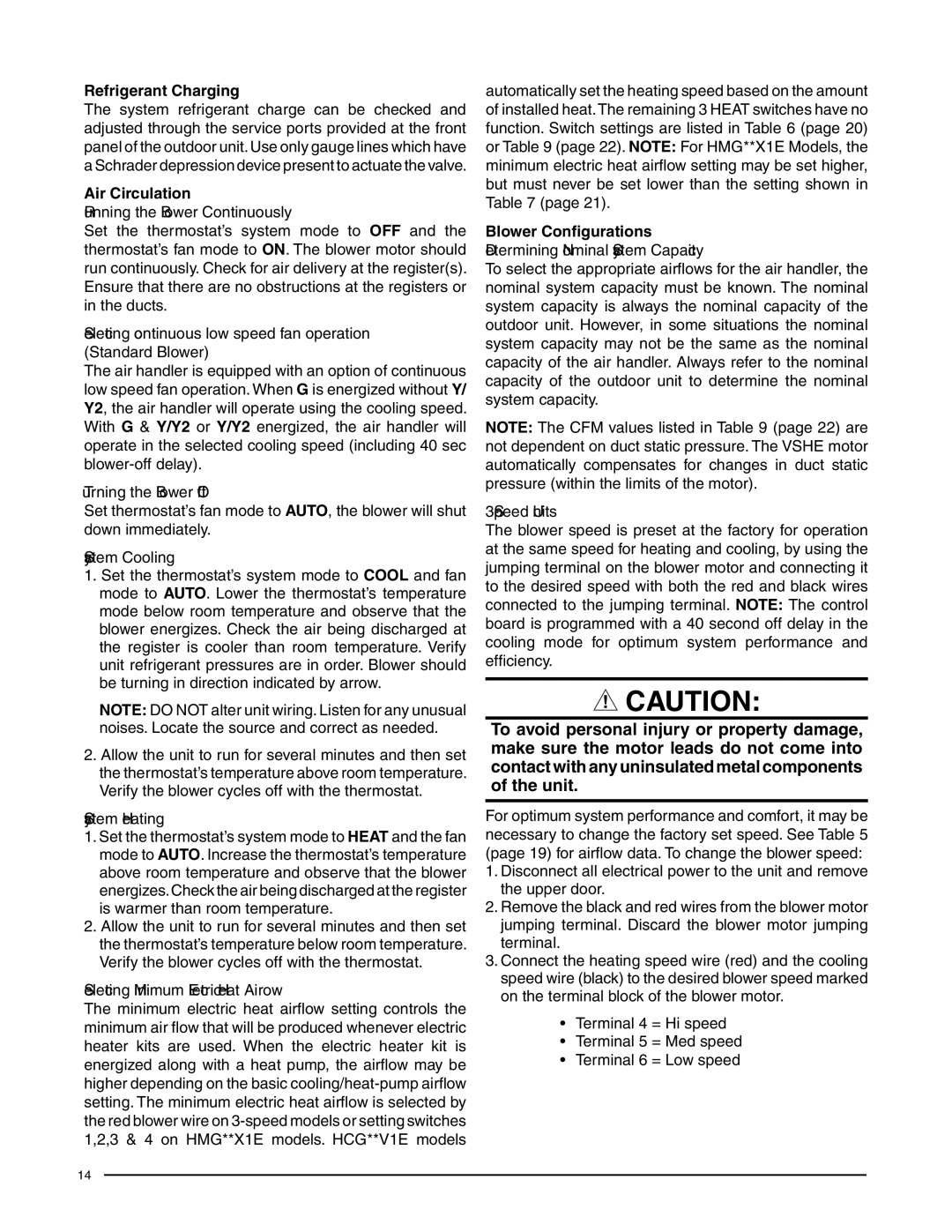HMG**X1E, HCG**V1E, HMG**F1E specifications
The Heat Controller series, comprising models HMG**F1E, HCG**V1E, and HMG**X1E, showcases advanced heating and cooling technologies designed for optimal comfort and energy efficiency in residential and commercial settings. Each model is equipped with a range of features that cater to diverse user needs while maintaining excellent performance.The HMG**F1E model stands out with its sleek design and compact size, making it ideal for smaller spaces. It utilizes inverter technology, which enables the unit to operate at variable speeds for greater efficiency and reduced energy consumption. This model also comes with a user-friendly remote control, allowing for easy adjustments of temperature settings and operational modes without the need to manually interact with the unit itself. The HMG**F1E is equipped with a filtration system that improves indoor air quality by removing dust and allergens, providing a more comfortable living environment.
In contrast, the HCG**V1E model is designed with versatility in mind, offering both heating and cooling functions. This unit features a programmable thermostat, allowing users to set their preferred temperatures for different times of the day. The HCG**V1E is manufactured with durable materials that ensure longevity and reliability under various weather conditions. Additionally, it provides whisper-quiet operation, ensuring minimal disturbance to indoor activities. The energy-efficient operation and smart climate control technology contribute to significant savings on energy bills.
Finally, the HMG**X1E model is known for its cutting-edge smart technology integration. This model can be connected to smart home systems, enabling users to control the unit from their smartphones or tablets. It features advanced sensors that detect occupancy and adjust heating and cooling accordingly, optimizing energy usage in real-time. The HMG**X1E also incorporates an eco-friendly refrigerant, aligning with modern environmental standards while delivering exceptional performance.
Overall, the Heat Controller series with models HMG**F1E, HCG**V1E, and HMG**X1E redefine comfort and efficiency. With their combination of innovative technologies, user-friendly features, and sustainable designs, they are perfect for anyone seeking reliable temperature control solutions for their spaces.

